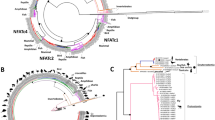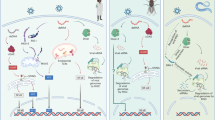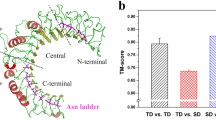Abstract.
The mechanisms of innate immunity in vertebrates show certain overall resemblances to immune mechanisms of insects. Two hypotheses have been proposed to explain these resemblances. (1) According to the evolutionary continuity hypothesis, innate immune mechanisms evolved in the common ancestor of vertebrates and insects and have been conserved since that time. (2) In the independent-evolution hypothesis, the mechanisms of innate immunity in vertebrates evolved independently from invertebrate immune mechanisms. Phylogenetic analysis of five gene families (Pelle, Rel, IκB, Toll, and TRAF) whose members are involved in NF-κB signaling in vertebrates and insects were used to decide between these hypotheses. The phylogenies of the Rel and TRAF families strongly supported independent evolution of immune functions in vertebrates and invertebrates, and, except for a possible case in the Pelle family, orthologous molecules having immune functions in both vertebrates and invertebrates were not found. The results suggest that NF-κB represents an ancient, generalized signaling system that has been co-opted for immune system roles independently in vertebrate and insect lineages.
Similar content being viewed by others
Author information
Authors and Affiliations
Additional information
Electronic Publication
Rights and permissions
About this article
Cite this article
Friedman, R., Hughes, A.L. Molecular evolution of the NF-κB signaling system. Immunogenetics 53, 964–974 (2002). https://doi.org/10.1007/s00251-001-0399-3
Received:
Accepted:
Issue Date:
DOI: https://doi.org/10.1007/s00251-001-0399-3




